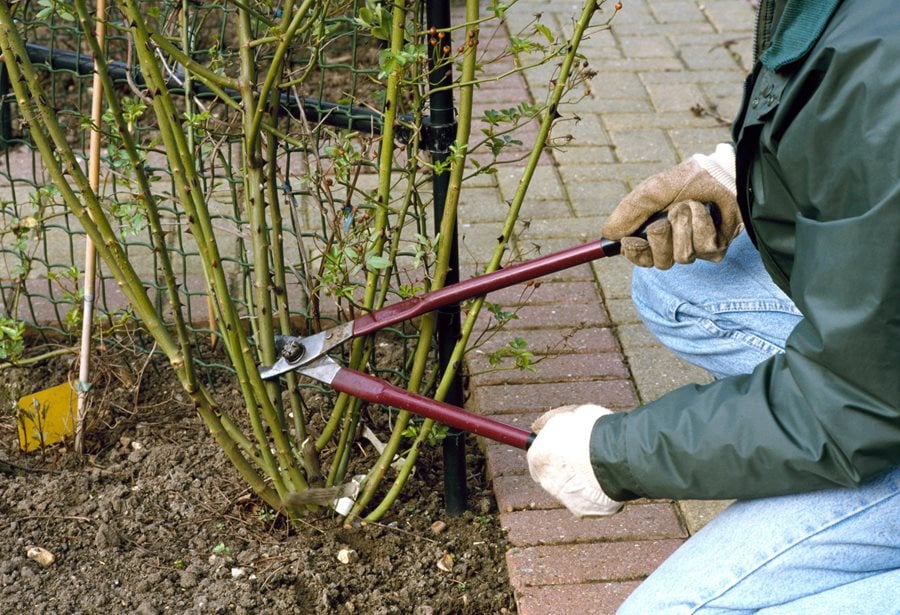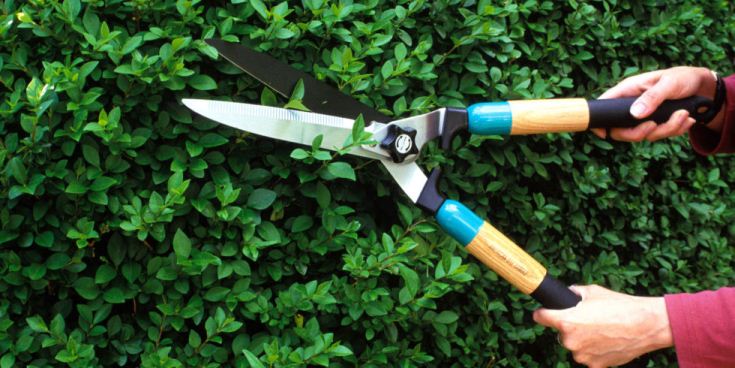Why Proper Pruning is Crucial for Tall Bushes
Proper pruning is essential for maintaining the health, shape, and appearance of tall bushes. Regular pruning helps to promote healthy growth, prevent overgrowth, and maintain the desired shape of the bush. When left unpruned, tall bushes can become leggy, sparse, and prone to disease. By pruning tall bushes regularly, you can encourage new growth, increase air circulation, and reduce the risk of pest and disease problems.
Pruning tall bushes also helps to maintain their structural integrity. Tall bushes can become top-heavy and prone to breaking or splitting in strong winds. By pruning the bush regularly, you can remove weak or damaged branches, reducing the risk of damage and promoting a stronger, more stable structure.
In addition to promoting healthy growth and maintaining shape, pruning tall bushes can also enhance their appearance. By removing dead or damaged branches, you can improve the overall appearance of the bush, making it look fuller and more vibrant. Regular pruning can also help to encourage blooming, as many tall bushes produce flowers or berries on new growth.
When it comes to pruning tall bushes, it’s essential to use the right techniques and tools. Using the wrong techniques or tools can damage the bush, leading to disease or pest problems. By learning how to trim tall bushes properly, you can keep your bushes healthy, looking their best, and thriving for years to come.
Whether you’re a seasoned gardener or a beginner, learning how to trim tall bushes is a valuable skill that can help you maintain the beauty and health of your garden. By following the right techniques and using the right tools, you can keep your tall bushes looking their best and enjoy the many benefits they provide.
Choosing the Right Tools for the Job
When it comes to trimming tall bushes, having the right tools for the job is essential. The type of pruning tool you choose will depend on the size and type of bush, as well as the level of pruning required. Here are some of the most common types of pruning tools used for trimming tall bushes:
Loppers are a popular choice for pruning tall bushes, as they are versatile and can be used for a variety of tasks. They typically consist of a long handle with a curved or angled blade on the end, and are available in a range of sizes to suit different types of bushes. When choosing loppers, look for a pair with a comfortable grip and a sharp blade that can make clean cuts.
Pruning saws are another essential tool for trimming tall bushes. They are designed for cutting thicker branches and are typically used for more extensive pruning jobs. When choosing a pruning saw, look for one with a curved or angled blade that can reach into tight spaces, and a comfortable grip that can reduce fatigue.
Pole pruners are a great option for trimming tall bushes that are out of reach. They typically consist of a long pole with a pruning head on the end, and can be used for a variety of tasks, including pruning, cutting, and shaping. When choosing a pole pruner, look for one with a sturdy pole and a sharp pruning head that can make clean cuts.
In addition to these tools, there are also a range of other pruning tools available, including hedge shears, pruning knives, and pruning scissors. When choosing a pruning tool, consider the type of bush you are working with, the level of pruning required, and the comfort and ease of use of the tool.
When learning how to trim tall bushes, it’s also important to consider the safety aspects of pruning. Always wear protective gear, including gloves and safety glasses, and ensure that your tools are in good condition and properly maintained. By choosing the right tools for the job and following proper safety precautions, you can ensure a safe and successful pruning experience.
Preparing for the Pruning Process
Before starting the pruning process, it’s essential to take the necessary safety precautions to ensure a safe and successful experience. When learning how to trim tall bushes, safety should always be the top priority. Here are some steps to take before pruning:
First, wear protective gear, including gloves, safety glasses, and a long-sleeved shirt. This will protect you from thorns, branches, and other debris that may be encountered during the pruning process.
Next, remove any debris or obstacles from the area around the bush. This will give you clear access to the bush and prevent any accidents or injuries. Remove any toys, furniture, or other objects that may be in the way, and clear the area of any leaves or branches that may have fallen.
Ensure that your ladder or step stool is stable and secure. When pruning tall bushes, it’s often necessary to use a ladder or step stool to reach the top branches. Make sure that your ladder or step stool is on a firm, level surface, and that it is securely positioned to prevent it from shifting or falling.
Finally, inspect the bush for any signs of disease or pests. If you notice any signs of disease or pests, it’s best to address the issue before pruning. This will prevent the spread of disease or pests to other parts of the bush, and ensure that your pruning efforts are successful.
By taking these safety precautions, you can ensure a safe and successful pruning experience. Remember to always prioritize safety when learning how to trim tall bushes, and take the necessary steps to protect yourself and your equipment.
Once you have taken the necessary safety precautions, you can begin the pruning process. Start by removing any dead or damaged branches, and then shape the bush to maintain its desired shape and size. Make clean cuts, and avoid tearing or ripping the branches, as this can damage the bush and lead to disease or pest problems.
Step-by-Step Pruning Techniques for Tall Bushes
Now that you have the right tools and have taken the necessary safety precautions, it’s time to start pruning your tall bushes. Here’s a step-by-step guide on how to prune tall bushes:
Step 1: Remove Dead or Damaged Branches
Start by removing any dead or damaged branches from the bush. This will help to prevent the spread of disease and encourage healthy growth. Use your loppers or pruning saw to cut the branches at the base, making sure to make clean cuts just above a growth node.
Step 2: Shape the Bush
Once you have removed any dead or damaged branches, it’s time to shape the bush. Use your pruning shears or loppers to cut back any overgrown branches, shaping the bush to maintain its desired shape and size. Make sure to cut at a 45-degree angle, and avoid cutting too much of the bush at once.
Step 3: Make Clean Cuts
When making cuts, it’s essential to make clean cuts that do not tear or rip the branches. This will help to prevent disease and encourage healthy growth. Use your pruning saw or loppers to make clean cuts, and avoid using dull or rusty tools.
Step 4: Thin Out the Bush
Thinning out the bush will help to allow more sunlight to reach the inner branches, promoting healthy growth. Use your pruning shears or loppers to remove select branches, making sure to maintain the overall shape and size of the bush.
Step 5: Check for Pests or Diseases
Finally, check the bush for any signs of pests or diseases. If you notice any problems, take action immediately to prevent the spread of disease or pests.
By following these steps, you can learn how to trim tall bushes like a pro. Remember to always prioritize safety, and take the necessary precautions to protect yourself and your equipment.
Pruning tall bushes can seem like a daunting task, but with the right tools and techniques, it can be a straightforward process. By following these steps, you can keep your tall bushes healthy, looking their best, and thriving for years to come.
Tips for Pruning Specific Types of Tall Bushes
While the general pruning techniques outlined in this article can be applied to most types of tall bushes, there are some specific considerations to keep in mind when pruning certain types of bushes. Here are some tips for pruning specific types of tall bushes:
Holly Bushes
Holly bushes are known for their prickly leaves and bright red berries. When pruning holly bushes, it’s essential to wear protective gear, including gloves and safety glasses, to avoid injury from the sharp leaves. Prune holly bushes in the late winter or early spring, removing any dead or damaged branches and shaping the bush to maintain its desired shape and size.
Rhododendron Bushes
Rhododendron bushes are known for their showy flowers and dense foliage. When pruning rhododendron bushes, it’s essential to prune immediately after they finish blooming, as pruning at other times can reduce flowering. Remove any dead or damaged branches, and shape the bush to maintain its desired shape and size.
Arborvitae Bushes
Arborvitae bushes are known for their dense, scale-like foliage and conical shape. When pruning arborvitae bushes, it’s essential to prune in the late winter or early spring, removing any dead or damaged branches and shaping the bush to maintain its desired shape and size. Avoid pruning arborvitae bushes in the fall, as this can cause new growth that may not have time to harden off before winter.
Other Types of Tall Bushes
Other types of tall bushes, such as juniper, yew, and boxwood, may require special pruning considerations. For example, juniper bushes may require pruning in the late winter or early spring, while yew bushes may require pruning in the late summer or early fall. Boxwood bushes may require pruning in the late winter or early spring, and may benefit from regular pruning to maintain their desired shape and size.
By following these tips, you can learn how to trim tall bushes like a pro, regardless of the type of bush you are working with. Remember to always prioritize safety, and take the necessary precautions to protect yourself and your equipment.
Common Mistakes to Avoid When Pruning Tall Bushes
While pruning tall bushes can be a straightforward process, there are several common mistakes to avoid in order to achieve professional-looking results. Here are some of the most common mistakes to avoid when pruning tall bushes:
Over-Pruning
One of the most common mistakes to avoid when pruning tall bushes is over-pruning. Over-pruning can cause stress to the bush, leading to disease or pest problems. It can also cause the bush to become misshapen or uneven. To avoid over-pruning, prune only what is necessary to maintain the desired shape and size of the bush.
Pruning at the Wrong Time
Pruning tall bushes at the wrong time can also cause problems. Pruning in the fall, for example, can cause new growth that may not have time to harden off before winter, making the bush more susceptible to damage. Pruning in the spring, on the other hand, can cause the bush to produce new growth that may be damaged by late frosts. To avoid pruning at the wrong time, prune tall bushes in the late winter or early spring, when the bush is dormant.
Not Making Clean Cuts
Not making clean cuts is another common mistake to avoid when pruning tall bushes. Clean cuts are essential for promoting healthy growth and preventing disease or pest problems. To make clean cuts, use sharp pruning tools and cut just above a growth node, at a 45-degree angle.
Pruning Too Much at Once
Pruning too much at once can also cause stress to the bush, leading to disease or pest problems. To avoid pruning too much at once, prune only what is necessary to maintain the desired shape and size of the bush, and prune in small increments, allowing the bush to recover between pruning sessions.
Not Monitoring for Pests or Diseases
Finally, not monitoring for pests or diseases is a common mistake to avoid when pruning tall bushes. Pests or diseases can cause significant damage to the bush, and can be difficult to control once they have taken hold. To avoid this, monitor the bush regularly for signs of pests or diseases, and take action immediately if you notice any problems.
Maintenance and Upkeep After Pruning
After pruning your tall bushes, it’s essential to provide regular maintenance and upkeep to ensure they continue to thrive. Here are some tips to help you keep your tall bushes healthy and looking their best:
Watering
Watering is crucial for tall bushes, especially after pruning. Make sure to water your bushes regularly, providing enough moisture to support healthy growth. However, avoid overwatering, which can lead to root rot and other problems.
Fertilizing
Fertilizing your tall bushes can help promote healthy growth and encourage blooming. Use a balanced fertilizer that is specifically designed for shrubs, and follow the instructions on the label for application rates and timing.
Monitoring for Pests or Diseases
Regularly monitoring your tall bushes for pests or diseases is essential for maintaining their health. Keep an eye out for signs of infestation or infection, such as unusual growth patterns, discoloration, or damage to leaves or stems. If you notice any problems, take action immediately to prevent the spread of disease or pests.
Mulching
Mulching around the base of your tall bushes can help retain moisture, suppress weeds, and regulate soil temperature. Use a layer of organic mulch, such as wood chips or bark, and keep it a few inches away from the base of the bushes.
Pruning Maintenance
Finally, regular pruning maintenance is essential for keeping your tall bushes healthy and looking their best. Prune your bushes regularly to maintain their shape, promote healthy growth, and encourage blooming.
By following these tips, you can keep your tall bushes healthy and thriving, and enjoy their beauty for years to come. Remember to always prioritize regular maintenance and upkeep, and take action immediately if you notice any problems.
Conclusion: Achieving Professional-Looking Results
Mastering the art of shrub maintenance is a skill that can be learned with practice and patience. By following the steps outlined in this article, you can achieve professional-looking results with your tall bush pruning efforts. Remember to always prioritize regular pruning, maintenance, and upkeep to keep your tall bushes healthy and thriving.
Whether you’re a seasoned gardener or a beginner, learning how to trim tall bushes is a valuable skill that can enhance the beauty and value of your outdoor space. By incorporating the tips and techniques outlined in this article into your gardening routine, you can enjoy the many benefits of well-maintained tall bushes, including improved curb appeal, increased property value, and a more enjoyable outdoor living space.
So, don’t be intimidated by the thought of pruning your tall bushes. With the right tools, techniques, and knowledge, you can achieve professional-looking results and enjoy the many benefits of well-maintained tall bushes. Happy pruning!



:max_bytes(150000):strip_icc()/492648155-56a98ca65f9b58b7d0fca113.jpg)




